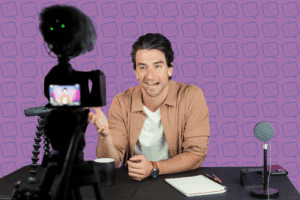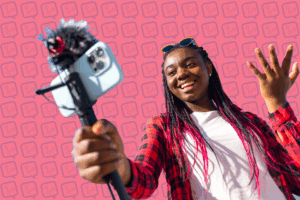Understanding Compliance for Influencers and Brands

For creators and brands, it is important to be transparent about the partnerships you engage in. Honesty and transparency are vital for creators to maintain a trusting relationship with their viewers, and sometimes that means following guidelines set forth by the FTC. The Federal Trade Commission (FTC) has a set of rules regarding disclosures when it comes to creators getting compensation or free products in return for their endorsement. Creators and brands must abide by these guidelines to continue their partnership. The FTC guidelines dive into more detail, but below is a brief outline of when and how to disclose a relationship between an influencer and brand.
When Should Influencers Disclose a Partnership?
As the FTC states, it is vital to keep followers in the loop about when you are getting monetary or material gain for promoting a product or service. It is the influencer’s job to disclose these partnerships and comply with the rules in place, as being open about the partnership is not the job of the brand. It is important to note that if you receive anything, like money, a free product, or discounts, you need to disclose your partnership with the brand to your audience. Additionally, a creator cannot assume that their audience knows about a partnership because they have worked with the brand before and must always disclose it.
What Should Influencers Disclose?
The FTC requires that the disclosure is in plain sight. It is important to not mix your “#ad” or other hashtags required by the brand deal with other, unrelated hashtags. The disclosure should be at the beginning of the caption or post. In video form, the disclosure should not only be in the description, but also in the video while the ad integration is taking place. Leaving the disclosure until the end can be viewed as deceptive because it is easily skipped.
It is important to use clear wording with no abbreviated words, like “spon” or “collab.” By using words like “advertisement” or “sponsored,” the viewer can more clearly understand the relationship between the influencer and brand. Some brands will be stricter regarding their script. Different brands will prefer, and often require different wording when promoting their brand. Our team at InfluenceLogic helps keep creators on the right track when it comes to complying with FTC and brand guidelines.
Lastly, it is important to remember that influencers should give an honest review of the product or service they are reviewing. It is not possible to be completely transparent and open with viewers if creators don’t give an honest review of the product. Working with InfluenceLogic can help creators get in touch with reputable brands that create great products and services, so influencers can feel safe in testing and promoting the brands we work with.
What Can Brands Do to Maintain Compliance?
For brands, the FTC requires they keep an eye on the influencers they employ. It is important to know that if a creator is deceptive and causes harm, it can come back to hurt the brand. Because of this, it is imperative that creators have a firm idea of what they can and cannot say about the product or service. Influencers must know that they cannot make false health claims or give explicit and wrong instructions.
As per FTC guidelines, brands must also tell influencers about the necessity to disclose their relationship to the brand. They must stress that the creators they employ disclose their partnership and consistently keep tabs on them and what they are saying, intervening if there are issues with the promotion.
With InfluenceLogic, brands can rest assured knowing that their creators are complying with FTC regulations. Our Compliance Team checks in with influencers and all of their creative assets and assures that they are following the guidelines. Bethanie Stephens, Head of Compliance at InfluenceLogic, notes that “effective communication is a must.” We work closely with all parties to ensure that our influencers are compliant, and our brands are satisfied with the final product.






